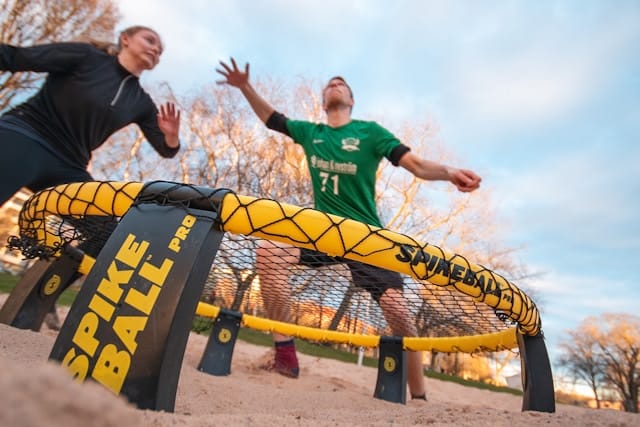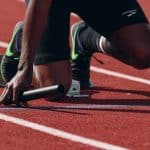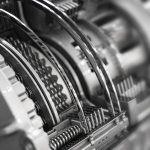As we delve into the role of biofeedback and neurofeedback in enhancing athletic performance, we’ll particularly focus on the sport of rowing. We will explore how data-driven training methods are revolutionizing sports science, providing athletes with a competitive edge like never before. Our sources will include top-tier research from scholar.google, PubMed, MDPI, and CrossRef.
The Power of Biofeedback & Neurofeedback in Athletic Performance
In the realm of sports science, exciting developments are taking place in the field of biofeedback and neurofeedback technologies. Biofeedback and neurofeedback are techniques that provide real-time data about the body and brain, allowing athletes to monitor their physiological responses and adjust their performance accordingly.
A lire aussi : How Can Athletes Leverage Cryotherapy for Faster Recovery Post-Training?
Biofeedback is a process in which athletes receive live data about their physiological states, such as heart rate, muscle tension, and skin temperature. Neurofeedback, on the other hand, provides live feedback on brain activity, which can give insights into focus, attention, and emotional states.
These techniques have gained traction in the sports world as they offer athletes a way to understand their bodies and brains better. By utilizing this data, they can optimize their performance and recovery, and significantly reduce the risk of injury.
A voir aussi : What Are the Latest Techniques in Sports Analytics for Optimizing Basketball Team Formations?
The Crucial Role of Force & Peak Performance in Rowing
Rowing is a sport where the synchronization of force and peak performance is essential. The athlete’s ability to generate maximum force and maintain it throughout the race determines their success or failure. This is where biofeedback can make a significant impact.
Force is a critical factor in rowing. Each stroke the rower takes requires force, and the ability to generate and maintain this force for extended periods is imperative. However, generating force without overexerting oneself is a delicate balance.
Peak performance in rowing is not just about generating force but also about maintaining it at an optimal level throughout the race. Monitoring data about force generation and maintenance can help rowers understand their output and how it affects their performance.
Rowing Training Refined by Real-Time Biofeedback
Biofeedback technology has revolutionized training in rowing. By providing real-time data on physiological parameters such as heart rate, respiratory rate, muscle tension, and force exerted, biofeedback provides rowers with a wealth of information that they can use to optimize their training.
Real-time biofeedback allows athletes to make instant adjustments to their technique, based on the feedback they receive. For instance, if a rower’s heart rate is too high, they can adjust their rowing rhythm or breathing technique to bring it down. This real-time adjustment ability can be critical during races, helping rowers optimize their performance in the moment.
Moreover, training programs can be tailored based on the athlete’s biofeedback data. For example, if data shows that a rower’s force output drops significantly after a certain time, their training can be modified to improve their endurance.
The Impact of Neurofeedback on Focus & Mental Stamina in Rowing
Neurofeedback is another technology that is proving beneficial for rowers. Rowing demands not only physical strength and endurance but also mental stamina and focus. For a rower, losing focus for even a split second can result in a missed stroke that can cost them the race.
Neurofeedback training can help rowers improve their focus and mental stamina. By providing real-time data on brain waves, neurofeedback allows athletes to monitor their mental states and adjust accordingly. If an athlete’s brain waves indicate that they are losing focus, they can employ techniques to regain their concentration.
Studies on neurofeedback have shown its effectiveness in improving attention, reducing stress, and even enhancing mood. All of these factors can contribute to an improved performance in rowing.
Integrating Biofeedback and Neurofeedback into Rowing Training
Integrating biofeedback and neurofeedback into rowing training is a step towards a more data-driven approach to sports training. By regularly monitoring their physiological and mental states, rowers can gain a deeper understanding of their bodies and brains, and how they respond to various conditions.
Coaches can also benefit from this data, as it provides them with a more accurate picture of the athlete’s state, which can inform training adjustments. For example, if data shows that a rower’s muscle tension increases significantly during the final stages of a race, specific training can be implemented to improve muscular endurance.
This data-driven approach not only improves performance but also helps prevent injuries. Understanding how the body responds during training and competition can give valuable insights into when the body is being pushed too hard, and when rest and recovery are necessary.
In conclusion, biofeedback and neurofeedback are powerful tools for enhancing performance in rowing, providing real-time data that allows athletes to fine-tune their physiological responses and mental states. These technologies represent the future of sports training, enabling athletes to reach their full potential in a safe and sustainable way.
Machine Learning in Biofeedback and its Contributions to Rowing
Machine learning, a type of artificial intelligence, has found its place in the realm of biofeedback technologies. In the context of rowing, machine learning can analyze the vast amount of data generated by biofeedback devices to provide highly personalized and accurate insights about an athlete’s performance.
Until recently, the data collected from biofeedback sessions had to be interpreted manually, which was time-consuming and occasionally prone to errors. With the advent of machine learning, this data can now be processed and interpreted much more efficiently. This means that athletes and coaches can access the insights they need more quickly, and those insights are likely to be more accurate.
Machine learning can help to identify patterns and trends in an athlete’s physiological responses that may not be apparent from manual analysis. For example, if a rower’s stroke rate consistently drops after a certain period, machine learning algorithms can highlight this trend and suggest that the athlete needs to work on their endurance.
By analyzing real-time data from biofeedback devices, machine learning can also help rowers to make instant adjustments to their performance. For example, if the data shows that a rower’s heart rate is too high, an alert can be sent to the rower in real time, enabling them to adjust their rowing rhythm or breathing technique immediately.
The Future of Real-Time Biofeedback in Rowing: A Systematic Review
The impact of real-time biofeedback on rowing performance has been the subject of multiple studies. A systematic review of these studies, using sources such as Google Scholar, Scholar Crossref, Preprints org, and CrossRef PubMed, provides strong evidence of the benefits of this technology.
One of the main benefits highlighted in these studies is the ability of biofeedback to improve the efficiency of the rowing stroke. By providing instant feedback on aspects like force exerted and stroke rate, rowers can make immediate corrections to their technique. This can lead to a more efficient stroke, which can in turn improve rowing speed and endurance.
Neurofeedback training has also been shown to have positive effects on mental aspects of rowing. Through real-time monitoring of brain waves, neurofeedback can help rowers to improve their focus and mental stamina. This can be particularly beneficial during long races, where mental fatigue can become a significant issue.
The use of machine learning in conjunction with biofeedback data is another promising development. Machine learning algorithms can analyze the large volumes of data generated by biofeedback devices, providing detailed insights into an athlete’s performance and potential areas of improvement.
Conclusion
In conclusion, the use of real-time biofeedback and neurofeedback is revolutionizing the training and performance of competitive rowers. These technologies provide insights into an athlete’s physiological and mental states, allowing for instant adjustments and informed training decisions.
The integration of machine learning with biofeedback technology offers further potential for enhancing rowing performance. By efficiently analyzing biofeedback data, machine learning can provide in-depth insights and predictive analytics that can help to further tailor training programs and strategies.
Incorporating these technologies into rowing training represents a data-driven approach to sports science. This approach not only enhances performance but also contributes to injury prevention. As research on these technologies continues, we can expect to see even more innovative and effective methods for improving athletic performance in the future.











